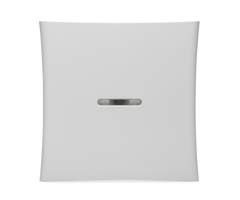DSC PG9920
PowerG 915MHz Wireless Repeater
Description
The DSC PG9920 is the wireless repeater for PowerG Sensors and PowerG automation devices. The device works by taking the signal sent by a PowerG sensor and sending it out a second time. This effectively doubles the range of the device. This will give the device a signal range of up to 4,000 meters with a clear line of sight.
It's hard to imagine a scenario when the range of a PowerG Sensor isn't enough. Even without a repeater, a PowerG Sensor has a signal range of up to 2,000 meters when used in open air. This is already the furthest range we have seen out of a wireless security sensor. But if a user finds that this isn't enough, the PowerG Repeater will certainly get the job done. Remember, signal range can be significantly reduced due to the presence of certain building materials. The PowerG Sensor can be great for ensuring that a device can communicate properly through thick walling or other construction.
The PowerG Sensors all communicate at a frequency of 915 MHz. The PG9920 repeats signals at this frequency so that they can more effectively reach the alarm system. The device usually receives AC power from a wall outlet, but it also comes with a rechargeable backup battery that will keep the device powered for up to 48 hours. It also utilizes 128-bit AES encryption to protect itself and the devices connected to it. Overall, this is a great device for ensuring proper communication between a PowerG Panel and sensors.
NOTE: The maximum range for a PowerG Sensor used with an IQ Panel 2 Plus System is only 2,000 feet in open air. This is considerably less than the advertised 2km range. The 2km range refers to when a PowerG Sensor is used with a DSC PowerSeries NEO System. This repeater will only increase the maximum distance for a PowerG Sensor used with an IQ Panel 2 Plus System to 4,000 feet in open air.
Brand: DSC





